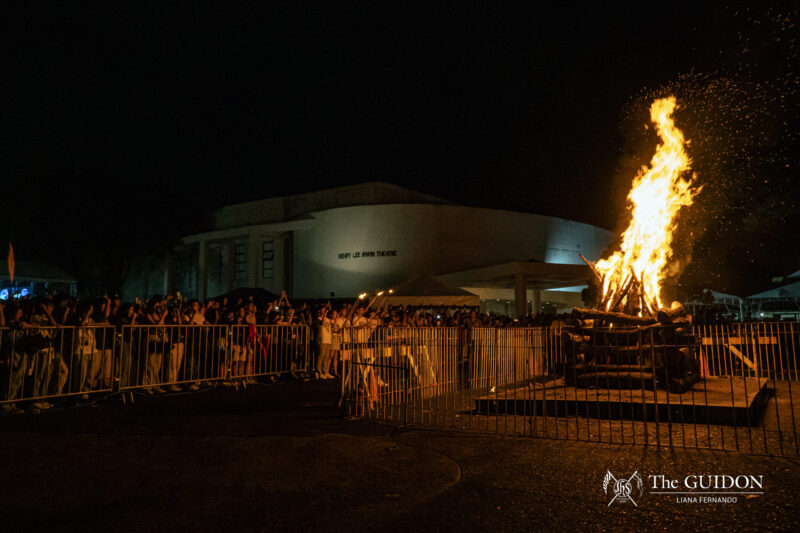
ONE FOR ALL. An Aisis account is required for every student of the Loyola Schools. Photo by Ryan Y. Racca
It is a practice akin to a ritual: prior to the beginning of every semester, students of the Loyola Schools log in to the Ateneo Integrated Student Information System (Aisis) to enlist in their classes and update their information records.
Although the college provides avenues for the manual accomplishment of such actions, Aisis is the primary tool used by students to register for their classes. It is also in Aisis where students’ grades are first released.
One merely needs a web browser and a stable internet connection to use the system. However, although it is a significant technological leap from the days of manual registration, it has not been free from its share of scrutiny.
Complaints of slow loading times, website instability and server overload have given way to questions regarding the parity in the random number assignments and batching system currently in place.
In order to help address these issues, the school has recently put in place a two-batch system to replace the four-batch method previously used. The administration maintains that having fewer batches will lead to more opportunities for students to enlist in the classes they want, thus resulting in a fairer process overall.
However, given a number of practical concerns, such as the capacity of the website’s servers to handle the traffic that inevitably comes during enlistment period, will Aisis ever be able to strike that delicate balance between equality of opportunity and the limitations of technology?
Earlier days
Prior to the inception of Aisis, class enlistment in the Ateneo was manual. Students would line up in each of the individual departments of the classes they intended to take. After that, accountants would come up with assessment forms to determine how much students would have to pay in tuition. Only after these steps are done could the students finally go to the cashier to settle their fees.
“We essentially had to line up for five, six or seven hours,” reminisces Vice President for the Loyola Schools John Paul Vergara.
In 1998, the Office of Management Information Systems (OMIS) developed the first version of Aisis. This was done in conjunction with the Registrar’s Office, the Associate Dean for Academic Affairs (ADAA) and the individual academic departments of the Loyola Schools (LS).
“What you see in Aisis is all a product of the team effort by the different offices and departments,” says Christopher Glenn Año, director of the OMIS.
Aisis Version 1.0, which was implemented in June 2002 and used until 2005, was limited to the Intranet. This meant that it was accessible only within campus. Like in manual enlistment, students had to line up in each of the individual academic departments to enlist into classes. This time, however, students were able to line up in a single venue to encode their registration forms, and data was inputted into Aisis for record-keeping purposes.
“[It was] automated as far as records go, but the enlistment process was still manual,” Vergara says.
From Intranet to Internet
In 2005, a revolution of sorts occurred when Aisis was finally made accessible through the Internet. This allowed students to bypass the plodding manual procedure of yore, and instead perform the whole process online, no matter how far they were from the university.
This came to be known as Aisis Version 2.0—Aisis as we know it today.
Through Version 2.0, students can do more than just enlist in classes. To name a few, they could use it to access their grades, evaluate their professors, print their assessment forms, examine their individual program of study and view their class schedules.
“Everything about the students—enrollment records, personal records, academic records, even disciplinary records—they’re all stored in that central database,” Año says. “It has different levels of access. What you can see is for student access. It also has access for faculty members, for staff, for administrators. For each level of access, there are different modules inside.”
A look inside
Up until recently, the administration had used a system for online enlistment that would randomly generate numbers for each student. Such numbers would be used to determine the student’s assignment among the four batches. The four batches were assigned different timeslots to access Aisis during enlistment period.
This system, which essentially divides the amount of traffic entering the Aisis website by four, was designed primarily in order to ease the load on the online portal’s servers. “If everybody tries to login at the same time, there’ll be a system load issue,” Vergara says.
However, an inevitable by-product of this system was that it gave priority to a select few in the enlistment process, and effectively left those who were less fortunate, as far as random numbers go, to compete for the slots that are left.
Since the process by which the numbers were generated was entirely random, some individuals were consistently assigned in the higher tiers of the batching system, and vice versa.
“For the past couple of years, as far as I know, there have always been people who had a problem with the four-batch system,” School of Social Sciences Chairperson Toni Potenciano says.
“One of the biggest complaints was that there were certain people, myself included, who have constantly been in the lower half of the four batches,” she adds.
In order to address this concern, Vergara looked into changes into the random number system that would factor in what batch a student had been in the previous semester when generating the new set of numbers for the following one.
“VP Vergara was going to use a new algorithm where, if you were fourth batch, then the chances of you being first, second, or third [next semester] were much higher,” Potenciano explains.
From four batches to two
In the end, however, these intended changes did not push through. Beginning this semester, the four-batch system was replaced by a two-batch one.
“Last summer, I asked VP Vergara, ‘What happened? Is that still going to be employed?’ and then VP Vergara said, ‘No, we’re just going to have two batches,’” Potenciano recounts.
According to Año, the two-batch system currently in place was “a product of a lot of meetings with the Sanggunian.”
“Students were clamoring for a more fair system, but not specifically a two-batch system,” Potenciano says, adding that the Sanggunian had been pushing for a one-batch system.
“Doing that might be difficult, because it might be too big of a jump to go from four batches to one batch, so we tried using two batches first,” Año explains in a mix of Filipino and English.
The two-batch system currently in place does serve to address concerns in the parity of the system. As the student’s batch rotates from semester to semester, rather than being randomly assigned, everyone gets a fair chance.
“If you’re one this sem, you’ll be two next sem,” Vergara says. “That way, you’ll always get a taste of being first batch.”
Towards one batch
For the time being, the two-batch system is here to stay.
“Generally, most of us are for it,” Sanggunian President Gio Alejo says. “In terms of its purpose and rationale, it’s really justified.”
Vergara hints, however, that the two-batch system may merely be a stopgap towards something more. “I talked to the MIS guys and said, ‘Why are we batching?’ … Can we do one batch? What’s stopping us from doing one batch?”
“It could well be the fairest way to deal with this—everybody has a fair shot at all the courses,” Vergara adds.
But when asked whether the gradual evolution of Aisis would eventually culminate in a one-batch system, Vergara refrains from raising expectations.
“We want a configuration where we manage expectations. If you’re batch one, and 90% of you got what you wanted, there’d be less complaints. If you’re batch four, and you didn’t get what you wanted, you didn’t expect it anyway, so there’d be less complaints.”
“We’ll look at it again and see the pros and cons,” he says.
In store
Vergara says he wants to make sure that technical limitations are no longer a variable in determining what kind of batching system is the most appropriate for online enlistment.
Beyond that, however, Año hints that there could be even more in store for Aisis in the future. “One thing we’re looking into is doing a mobile app.”
With this, Aisis is also slated for further hardware upgrades down the road.






